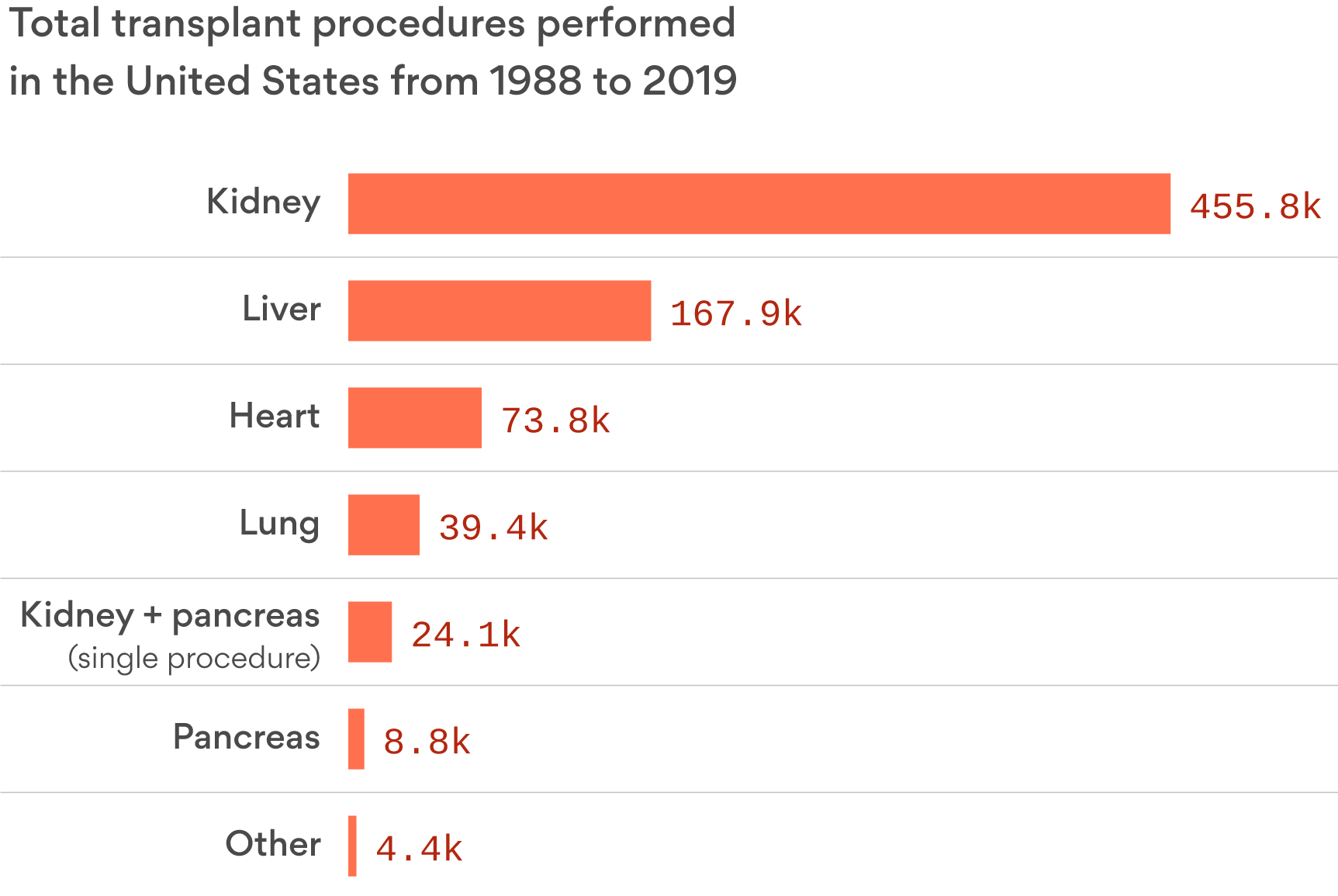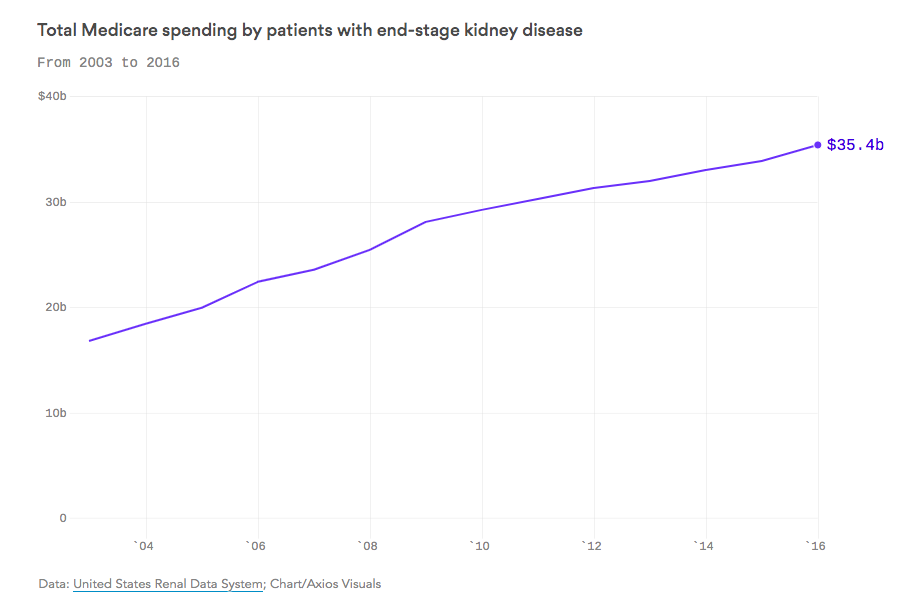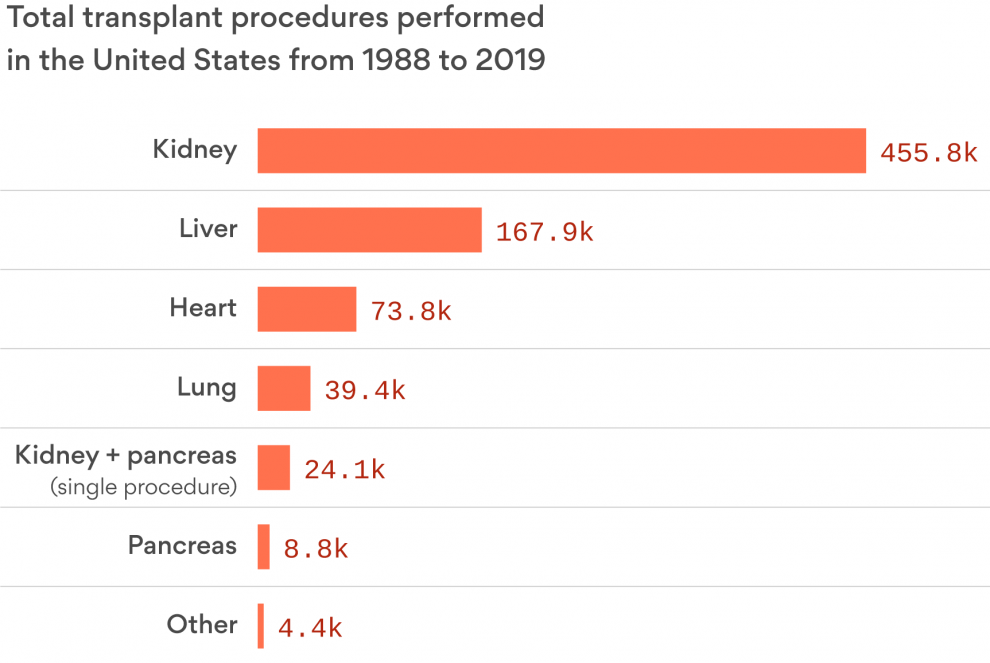President Trump signed an executive order on Tuesday to advance American kidney health by revamping the nation’s approach to renal disease, which was the ninth leading cause of death in the U.S. in 2017.
The ambitious set of proposals include improving diagnosis and prevention methods; giving more patients access to kidney transplants by modernizing organ recovery to make more kidneys available; as well as finding more affordable treatments and alternative treatments, such as developing artificial kidneys. The administration claims the strategies have the potential to save lives and millions of Medicare dollars.
Related: President Trump to sign executive order that revamps kidney care in U.S.
And a pair of charts drawn up by Axios show just how far-reaching the impact of this executive order could be on the 37 million Americans living with chronic kidney disease (including the 726,000 suffering end-stage renal disease, aka ESRD or kidney failure), and on the country as a whole.
More kidney transplants were performed in the U.S. between 1988 and 2019 than any other type of organ transplant, according to figures from the United Network for Organ Sharing, with 455,800 kidney procedures performed. Liver transplants, the second most common procedure, were less than half that number at 167,900.

The Trump administration also wants to have 80% of the patients diagnosed with kidney disease in 2025 treated with either home dialysis or a kidney transplant, rather than going to high-cost clinics, per the goals outlined in the executive order.
Because as kidney disease diagnoses have increased, Medicare spending has also climbed. Almost a quarter of traditional Medicare spending, adding up to $114 billion, covers kidney disease patients, according to the United States Renal Data System figures. And $35 billion of that goes toward patients who need dialysis or a transplant because their kidneys have failed.
 Chart/Axios Visuals
Chart/Axios Visuals
Yet an extreme shortage of donor kidneys, as well as the high cost of surgery and dialysis, make it hard for many patients to get treatment. More than 94,000 of the 113,000 people on the national organ waiting list need a kidney. Last year, there were 21,167 kidney transplants, a procedure that costs more than $400,000. Hemodialysis, which involves pumping a patient’s blood through an external circuit for filtration before it is pumped back into the body, runs $89,000 per patient per year on average.
And people who donate one of their kidneys pay for their life-saving deed. More than a third of living kidney donors lost a median of $2,712 in wages during the year following their donation. Trump’s executive order also calls for proposing reimbursement of lost wages and other expenses for living kidney donors.
“Today’s announcement on Advancing the American Kidney Health Initiative is smart policy that benefits patients and taxpayers alike,” said the American Association of Kidney Patients in a statement.











Add Comment